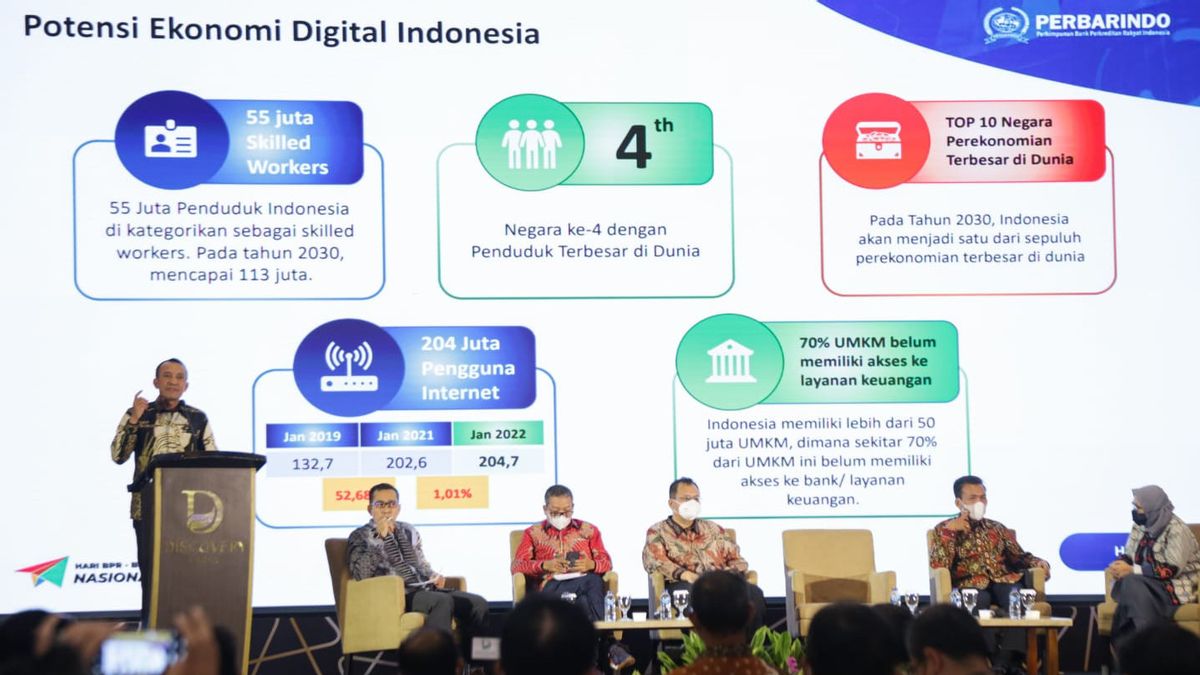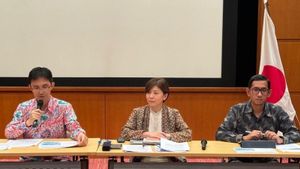JAKARTA - Capital is still the main problem in Rural Banks (BPR), especially after the existence of a minimum capital requirement and the fulfillment of minimum core capital for BPR according to POJK No. 5/POJK.03/2015. According to the POJK, the minimum core capital for rural banks is set at IDR 6 billion, which must be met no later than December 31, 2024.
In fact, there are still many BPRs that have a core capital of less than IDR 6 billion. According to Infobank Institute data, as of January 2022, there were 501 (30.7 percent) BPRs with core capital under Rp 6 billion out of a total number of 1,631 BPRs (1,467 BPRs and 164 BPRS). The large number of rural banks with core capital below Rp6 billion requires special attention from all stakeholders.
Getting capital from strategic partners is also not easy, especially from foreign investors. This is because, according to Law No. 10 of 1998 concerning Banking, particularly Article 23, BPRs may only be established and owned by Indonesian citizens.
In contrast to commercial banks, which allow for funding from foreign investors through a partnership system, according to Article 22 of the Banking Law.
From here emerged the discourse on the need for amendments to Law No. 10 of 1998 concerning Banking, so that rural banks can have the same rights as commercial banks in obtaining funding.
Not all shareholders have the ability to increase capital by depositing capital. For this reason, the potential and opportunity for Rural Banks to obtain funding from the capital market through a go public scheme is also open. The House of Representatives (DPR) of the Republic of Indonesia is ready to support efforts to amend Law No. 10 of 1998 on Banking.
Member of Commission XI DPR RI from the PDIP Faction, Musthofa, fully supports the BPR industry's efforts to seek capital through the go public scheme. According to him, BPR has been underestimated.
In fact, he said, the function and role of BPRs are not much different from commercial banks, namely they both carry out the intermediation function. BPR will become the spearhead of national financial institutions in mobilizing MSMEs.
"We at the DPR Panja are ready to fully support and fully support the steps in that direction, including the proposed amendments to the Banking Law, the BI Law, the OJK Law, and the LPS Law," said Musthofa in the seminar "Potentials and Opportunities for BPR Go Public and Go Digital. " which was held by The Finance and Perbarindo and the launch of the biographical book "Pioneering and Exemplary Banker Wymbo Widjaksono", at the Discovery Hotel, Ancol, Jakarta, Friday, June 17.
His party strongly supports efforts to equalize rural banks with commercial banks, especially in seeking funding. In fact, he was so enthusiastic about supporting the development of BPR, Musthofa suggested that the BPR be replaced.
"Don't worry about foreign investors taking their funds out. Now is the boarderless era, there are no more barriers between countries," said Musthofa.
As a follow-up effort to the discourse of BPR going public, his party also promised to take it to the DPR Panja.
"The work of the DPR is a collegial collective, it must involve other members, it cannot work alone," he said.
Chairman of the Association of Indonesian Rural Banks (Perbarindo), Joko Suyanto also stated, going public or initial public offering (IPO) is a dream for the BPR industry, one of which is an effort to increase capital.
There are a number of advantages if a BPR goes public, including getting tax incentives, increasing company value, increasing market awareness, growing employee loyalty, access to new funding, and improving good corporate governance (GCG).
In addition to the benefits, continued Joko, there are also a number of challenges that must be considered by BPRs when going public, namely delusions and control over ownership, transparency and reporting that must be carried out professionally, costs associated with the capital market, market pressure, as well as regulation and fulfillment.
"That's a challenge. The regulations and their use, plus what if now it's complicated, it will be even more complicated when we do the IPO," he said.
Member of the Board of Commissioners of the Deposit Insurance Corporation (LPS) Didik Madiyono revealed, BPR/BPRS have various opportunities that can be explored. Among other things, the growth in demand for BPR/BPRS that are able to provide innovative and varied digital-based banking products and services, cheap, safe, and easily accessible anywhere and anytime can be an opportunity for BPR/BPRS to accelerate their digital transformation.
In facing the acceleration of digital transformation, especially in the banking sector, there are several things that must be considered by BPR/BPRS in dealing with risks related to data security and adequate consumer protection.
"Utilizing technology and providing digital-based banking products and services actually has a number of security risks such as data leakage and cyber attacks, so that BPR/BPRS are required to be able to provide a reliable IT security system," he explained.
He also encourages BPR/BPRS to go public which will have a positive impact on strengthening capital, increasing efficiency and profitability, as well as strengthening the implementation of good corporate governance for BPR/BPRS.
"We certainly motivate BPR/BPRS to continue to innovate and transform so that they can grow sustainably and always maintain their financial performance. LPS is always here to maintain public trust in the banking industry, including BPR/BPRS," he explained.
Until April 2022, with a guarantee scheme of up to IDR 2 billion per customer per bank, there are 473,896,016 commercial bank accounts or about 99.93 percent of the total accounts that are fully guaranteed by LPS.
And, the number of BPR/BPRS customer accounts whose entire deposits are guaranteed as of March 2022 is 99.98 percent of the total accounts or equivalent to 14,515,423 accounts.
Meanwhile, OJK assessed that BPRs were able to survive and continue to grow positively during the pandemic compared to commercial banks which had experienced a decline. OJK's Director of Research and Regulation of BPR, Ayahandayani said that BPR growth was reflected in significant growth in terms of assets, credit, and third party funds (DPK).
"For yoy, total assets increased 9.15 percent, this growth was quite significant, total credit also increased by 7.95 percent yoy, this is very good, then third party funds also increased 10.63 percent yoy. " said Ayahandayani.
OJK has also launched a roadmap for the development of BPR/BPRS in 2021-2025 which produces 4 main visions, namely, agile, adaptive, contributive, and refilient. In addition to the vision, the roadmap also produces 4 main pillars, one of which is the acceleration of digital transformation. In this pillar, it is hoped that digital transformation opportunities will occur, such as digitizing BPR business activities, transferring funds, and making payments.
"BPR must be agile in the sense of being quick to innovate, adaptive to all existing developments, contributive, and responsive," he explained.
The English, Chinese, Japanese, Arabic, and French versions are automatically generated by the AI. So there may still be inaccuracies in translating, please always see Indonesian as our main language. (system supported by DigitalSiber.id)









